I’m lukewarm at best about celebrity-endorsed products. But the Helle Temagami knife, designed by “Survivorman” Les Stroud, is a solid performer.
by Leon Pantenburg
I rarely watch “reality” TV “survival” shows, and am leery of any products endorsed by some of the so-called “experts.”

Les Stroud is Survivorman.
But I was willing to check out the Helle Temagami, designed by Les Stroud. Stroud, of course, is Survivorman.
Several years ago Stroud wrote a book named “Survive”. It did well in some circles, but Peter Kummerfeldt, a mentor of mine and a survival expert I respect didn’t think much of it.
After reading the book myself, I agreed with Peter. (Check out Peter’s book.) This, obviously, biased my opinions about Stroud’s credibility.
But several years ago, I gave a Helle Folkekniven to John Nerness, my backpacking partner of 40-plus years. I reasoned that an American of Norwegian ancestry should have a genuine Norwegian knife. (Coincidentally, many of my close friends are also knife enthusiasts.)
John, a retired aircraft design engineer, has used his Folkekniven very successfully. John has commented several times how impressed he was with the design, blade structure and handle ergonomics.
Based on John’s recommendations, I assumed the rest of the Helle line would be high quality.
Helle knives are made in the village of Holmedal, Norway. The first factory, founded in 1932, operated without electrical power. The majority of the work was done by hand, and according to the company’s literature, that is still true today.
Subsequently, a Helle is a semi-custom user knife with an established track record for quality.
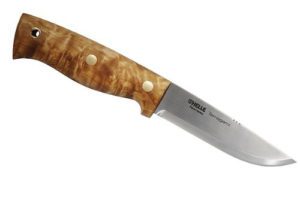
Helle Temagami
Here are the Temagami specs:
- Dimensions: Drop point blade, 4-1/4 inches
- Handle: 4-5/8 inches
- Blade thickness: 1/8 inch
- Weight: 5.0 oz total with sheath / 3.0 oz knife only
- Triple layered laminated stainless steel blade
- Each knife includes a custom, full grain leather sheath
Here is what I found after using the knife for several weeks:
Handle: This knife has a generous ergonomic handle that fits me very well. Small, dainty handles on a user knife don’t work for my large, working man hands. Check out other tool handles such as on a shovel, hammer, axe, or hatchet and you’ll see that they universally have a large diameter grip with an oblong profile.
Swing a 22-ounce framing hammer all day, as I did when I worked construction, and you develop definite ideas about handle design. (Years of hardcore manual labor is another reason I have large hands!)
A tool handle for me must be long enough to cover my four-inch right hand palm and have a large enough diameter that my finger tips barely touch the inside of my palm. The Temagami handle is proportioned just right.
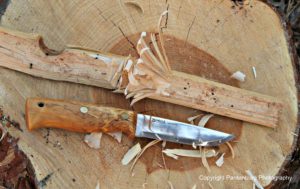
The handle size is appropriate for a working tool.
The handle material is curly-grained birch, a traditional wood that has been used for generations because of its hard and durable quality. My Kellem Hawk has the same handle material and that handle has held up well to rigorous use. Even when covered with blood or fish scales and slime, the handle never got too slippery to be safe.
Semi-full tang blade: Any knife that could be used in a survival situation should have a full tang blade, IMO. The Temagami’s tang goes completely through the handle. The semi-full tang provides the extra strength associated with bushcraft knives.
The tang is exposed on the top and pommel end, but is covered by the wood of the handle on the finger side. This protects the fingers from direct contact in cold weather.
It costs more to produce a semi-full tang blade than an ordinary full tang, according to the company website, but the result may be worth it when working in very cold conditions. If push came to shove, you could probably hammer on something with the pommel without completely ruining the knife.

On our most recent trek in August, 2017, John Nerness, left, and I hiked to the base of South Sister in the Oregon Cascades.
Blade thickness: The Temagami has a nice blade thickness. I go for thinner blades for the most part and the 1/8-inch thickness is an excellent choice for a knife that could be called upon to do food preparation, fish filleting, wood working and wilderness survival tasks.
Blade length: A four-inch blade is about the perfect all-around length. It is long enough to field dress and gut a whitetail, but not so long as to be awkward for wood carving.
Spine: The spine is ground to a 90-degree angle, like an ice skate, and this means the edge can be used to scrape a ferrocerium rod or to shred tinder.
But the softer steel on the spine wears quickly under such use. I had no trouble making sparks with the spine for the first few scrapes. After that, it eventually rounded down to the point where I couldn’t make the ferro rod spark.
The same thing happened with scraping hard pitchwood to shred it for tinder. It worked initially.
The spine should not be depended upon as an additional edge.
Steel: The steel is triple laminated Helle-steel. The harder core, according to the Helle literature, is designed to hold a razor sharp edge, with maximum duration, and the outer, softer steel is engineered for strength and flexibility.
I dulled the blade, then re-sharpened it. Restoring the edge was not a problem for anyone with basic sharpening skills.
Finding a stainless steel that can hold an edge can sometimes be quite a challenge, but this Helle-steel is doing quite well. Any steel can rust, but this steel is worth looking at if you will use the blade in hot humid climates (like my beloved Mississippi swamps) or near saltwater.
Point: The Temagami’s drop point is a good choice for a bushcraft/survival knife.
Sheath: I use dangler sheaths to carry most of my rigid blade knives, The sturdy leather sheath that comes with the Temagami has a swivel on the belt loop that allows the knife to move. I could wear the knife on my belt, and still sit comfortably in a car seat and fasten the seat belt.
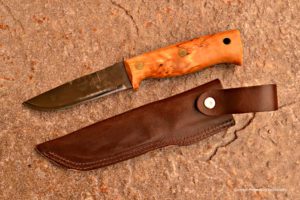
The Temagami’s dangler sheath is sturdy and well-constructed.
Made in Norway: The traditional Scandinavian craftsmanship shows on this knife. It is well-made and the finish is great.
Lifetime warranty: Helle knives have a lifetime warranty against production defects. This is not an unconditional lifetime, satisfaction guaranteed warranty. Know the difference, and if this is a deal breaker for you, shop around for a better deal.
Do you need a Helle Temagami?
So is the Temagami the best survival knife? Or the best bushcraft knife? Well, the search for those mythical knives continues.
Don’t buy any knife just because it has a celebrity endorsement, but because it might meet your particular needs.
The Temagami would work fine for cleaning and filleting fish, field dressing big game and a bunch of other outdoor tasks. And it handles well, and looks good. It retails for about $179.00, which is a reasonable price for a quality cutlery product. If you’re looking for a solid bushcraft/survival/preparedness knife, the Temagami may be just what you need.
Please click here to check out and subscribe to the SurvivalCommonSense.com YouTube channel – thanks!

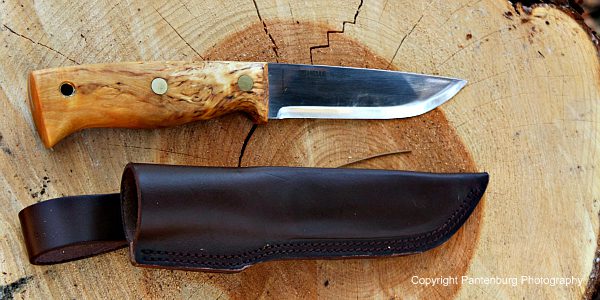

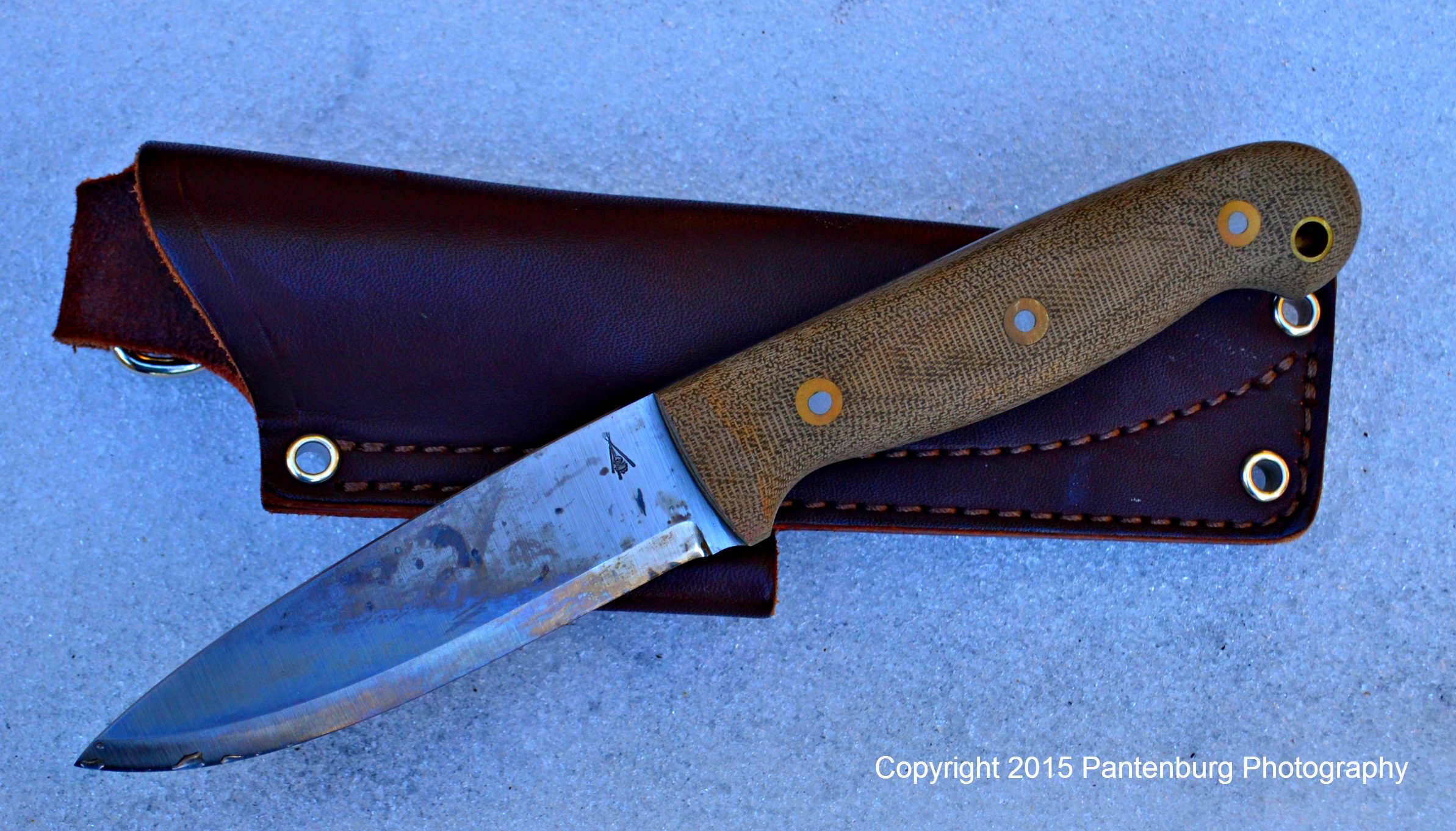
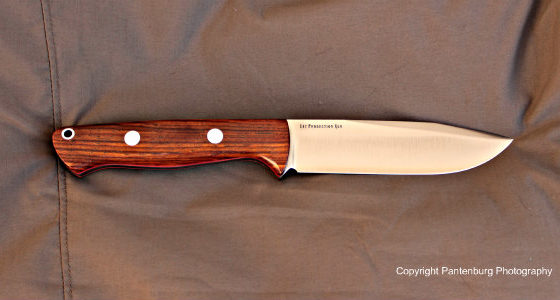
Leave a Reply